FT8
Some remarks to set up an existing empty OpenSuse Leap notebook (HP Elitebook) for FT8.
I started with HamPI on a Raspberry for the same task, but I did not like the many parts flying around on my desk (Raspi, small monitor, mouse+keyboard, powers supplies for all, active USB switch). So I decided to replace this solution with an older HP Elitebook 840 G3.
To not rely on available/non-available packages, I usually build all the tools from source.
flrig (fldigi)
With flrig, a rig (transceiver hardware) can be controlled. Both of my transceivers offer the possibility to do CAT control them via USB and have also Audio included via USB.
While the Yaesu FT10dx already has a USB connector, the Xiegu G90 needs an additional interface, in my case the Xiegu DE-19.
After that, flrig can be used to control the rig from the PC.
Moreover, flrig offers itself an API, that can be used by other software to delegate rig control to flrig.
Next image shows flrig with its UI for the Xiegu G90.
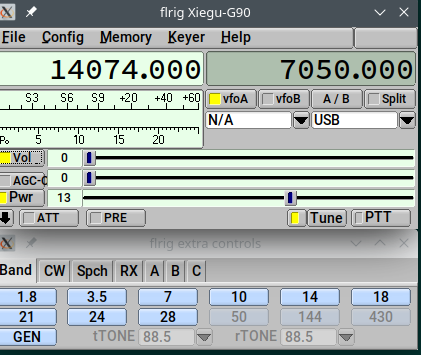
And the flrig config dialogue for Xiegu G90:
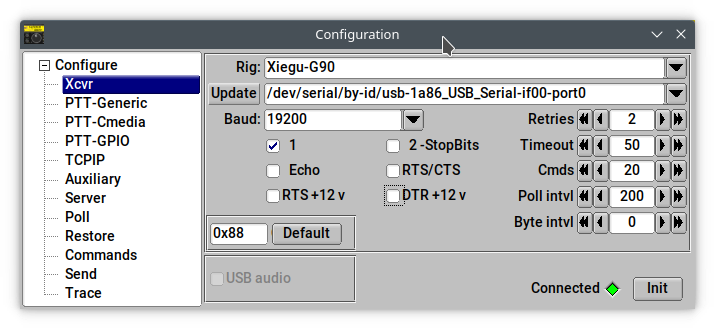
And the same images for Yaesu FT10DX:
flrig UI:
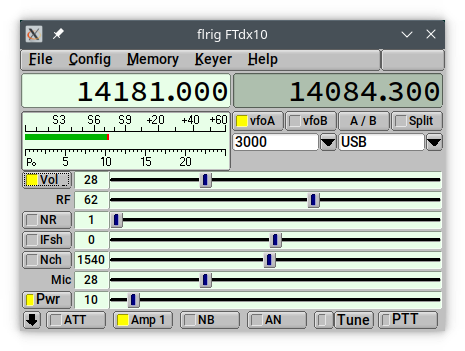
Config dialogue:
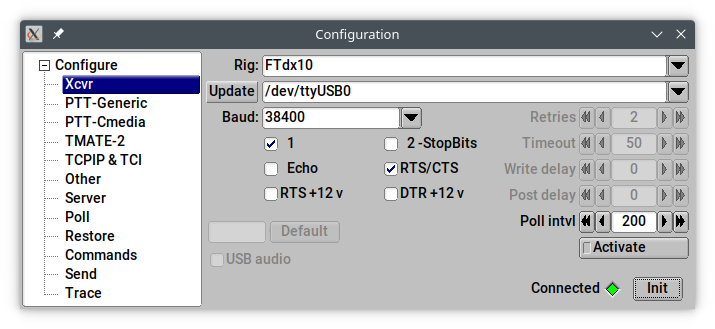
Info for build and install
- Either use existing package (in OpenSuse it is prebuild and can be installed ) with Yast) or download sources and build from there
- Some header files (devel) packages needed to be installed as prerequisites
- User who runs it needs to be in group “dialout” to be able to access via USB attached device (I use D19 device for Xiegu G90 rig)
WSJTX
WSJTX is a great software to work digital modes. E.g. FT8.
The following image shows WSJTX UI, in background GridTracker app is visible.
It shows my first FT8 QSO ever, with RK4FF from russia.
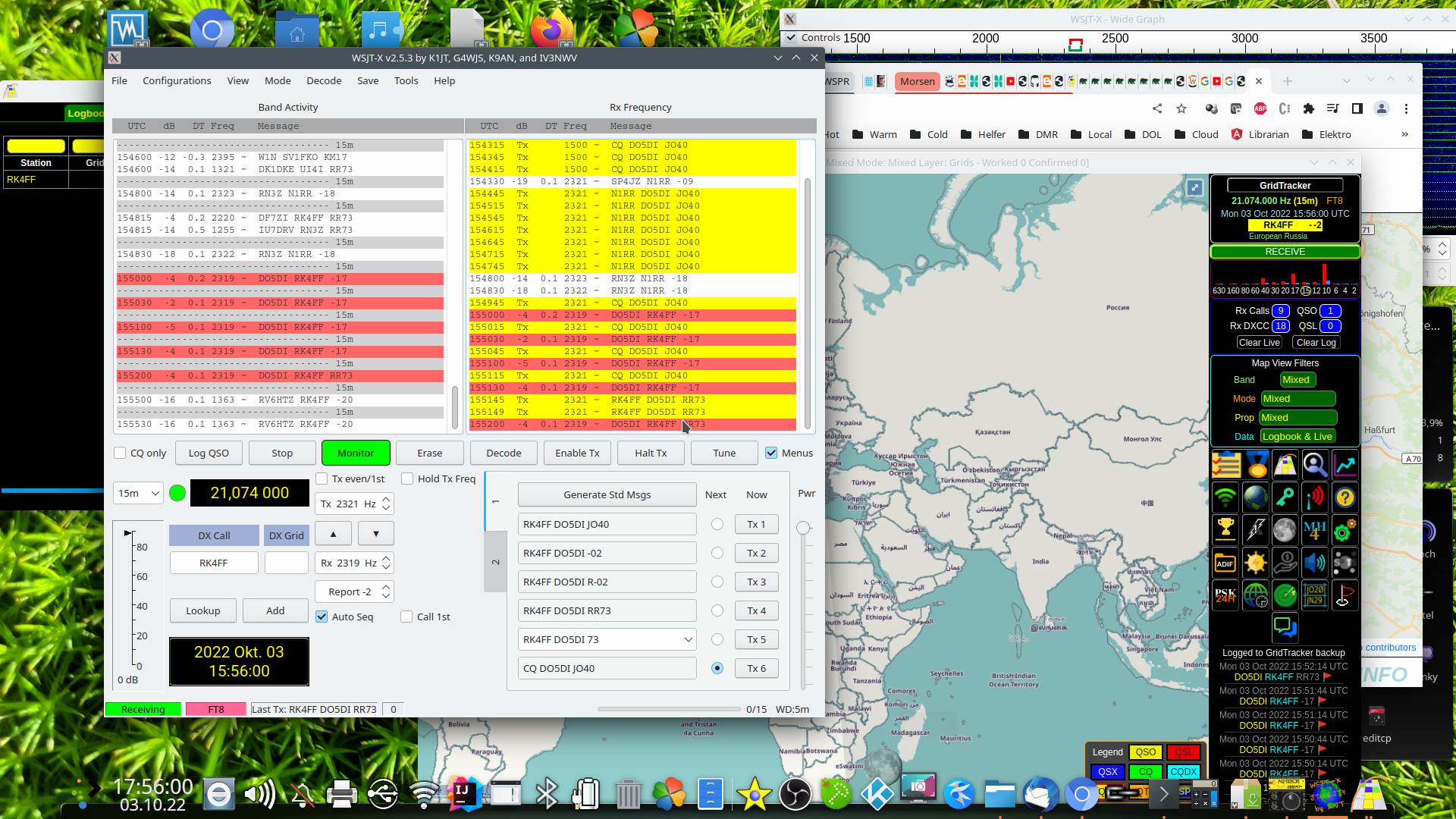
My second QSO ever.
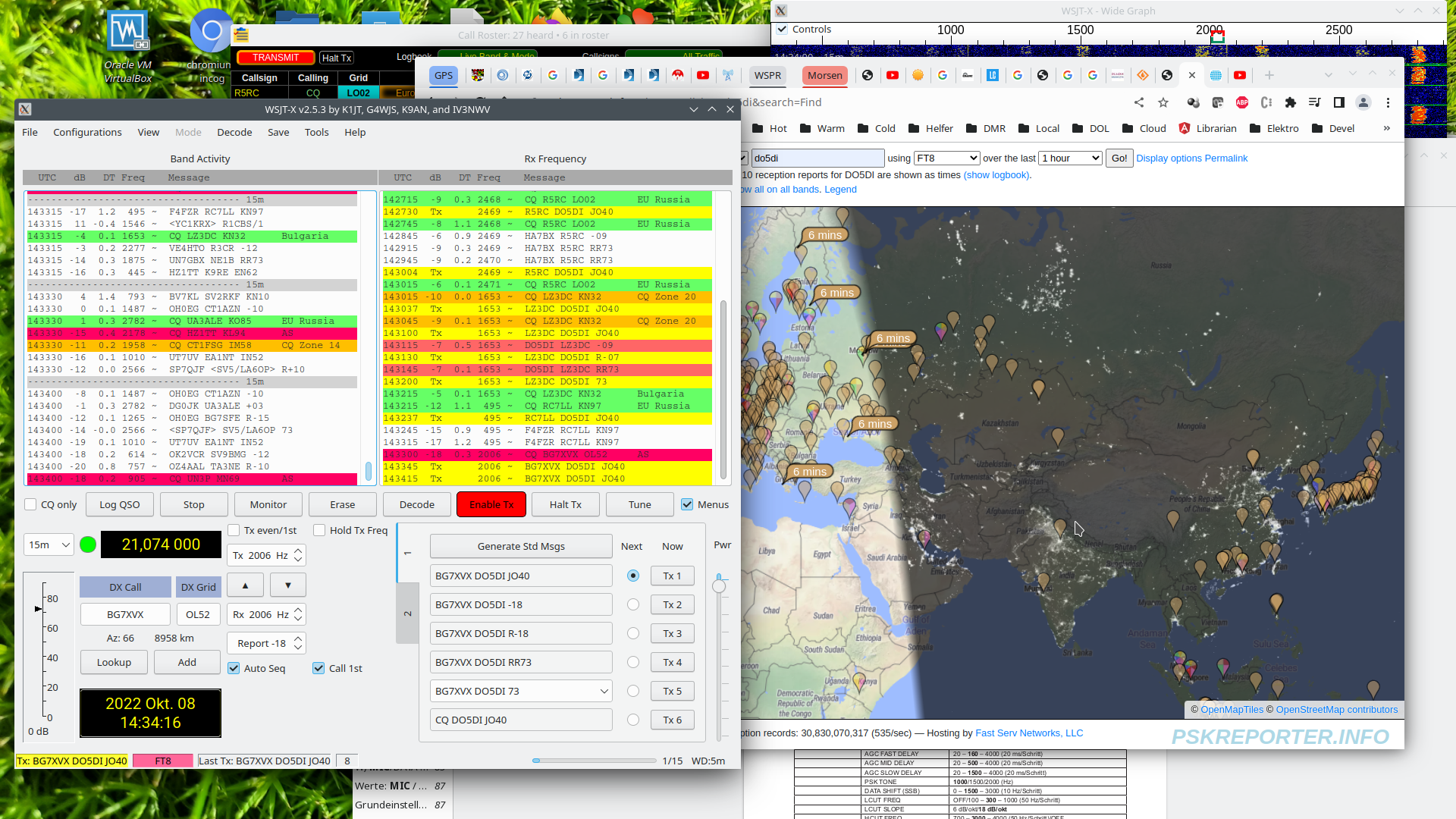
QSO details
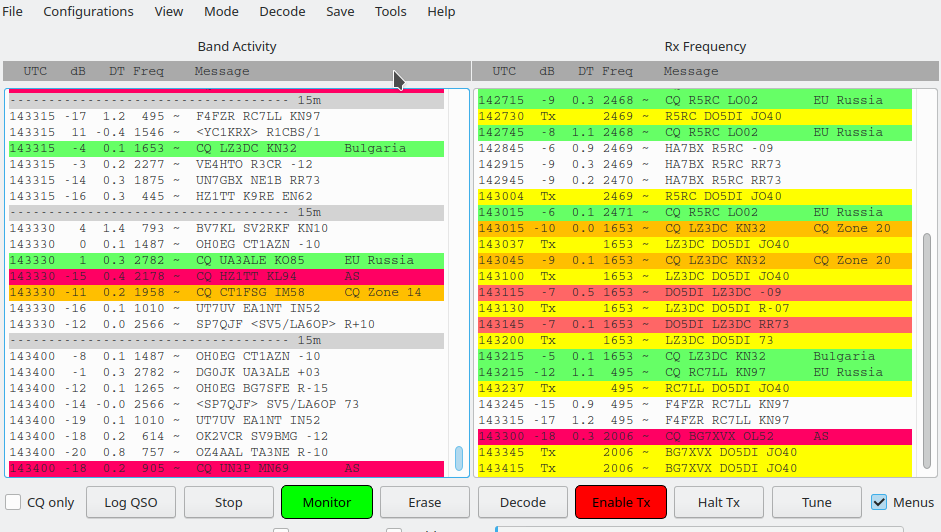
Info for build and install
- Download source tar ball
- Follow instructions in file
INSTALL. Especially install required prerequisite packages as listed there. For OpenSuse, I needed to install alsopatchtool via Yast. Note that this build will compile also FORTAN code. - I needed to add a bunch of unlisted dependencies: All of libboost including their devel packages. Some Print, Concurrent and some SQL devel package for QT.
- This is a large build needs which needs time.
Configuration for Yaesu FTDX10
Note the “Data/Pkt” selection for “Mode”:
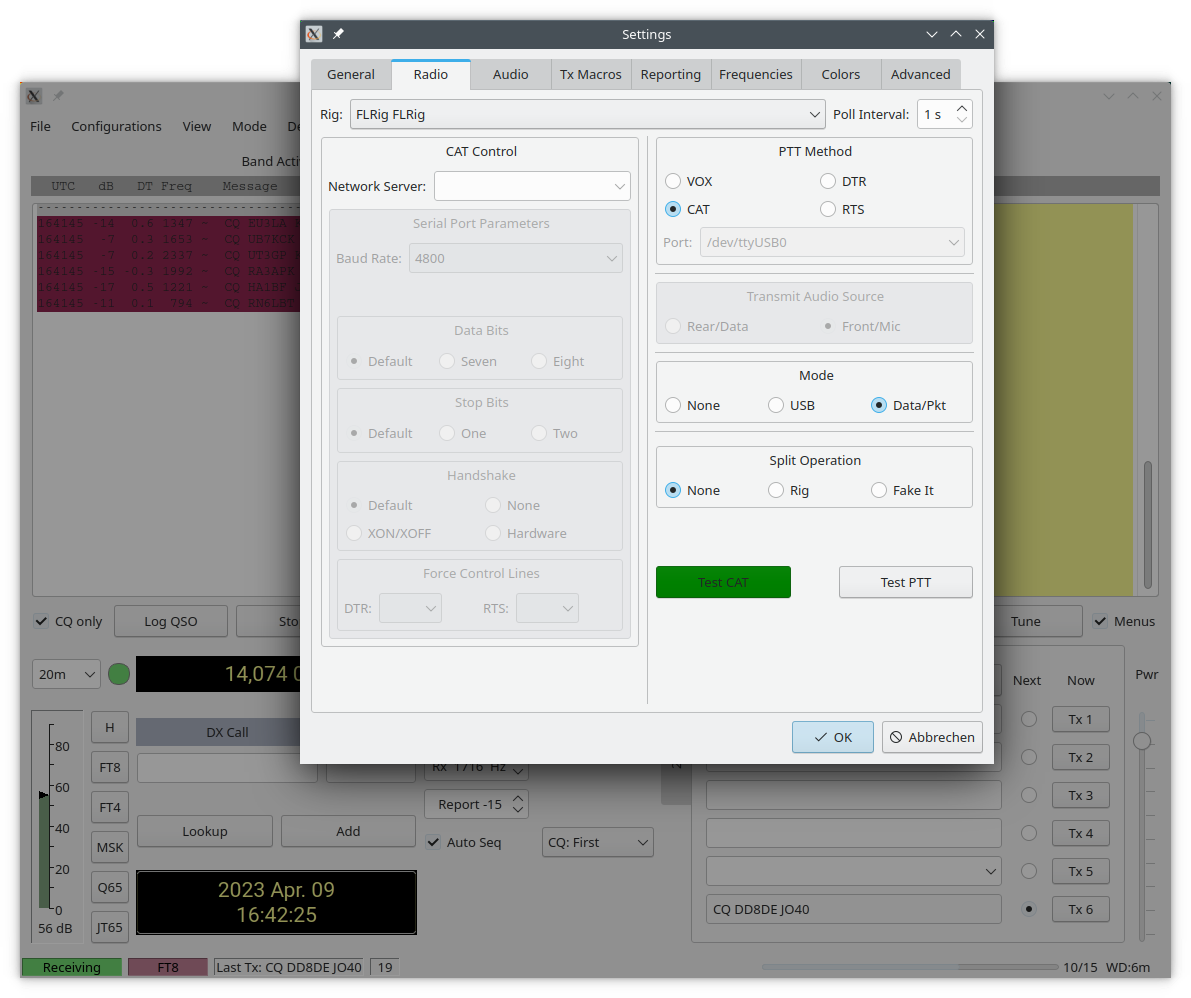
Important is Input and Output field. The “Location” values below were not touched.

pskreporter
PSKReporter is a great website that uses the data created by digital mode software and devices and display it in a nice map.
My Xiegu G90 run some time as a pure receiver. These stations were heared with a small indoor antenna (HamKing HVT-100).
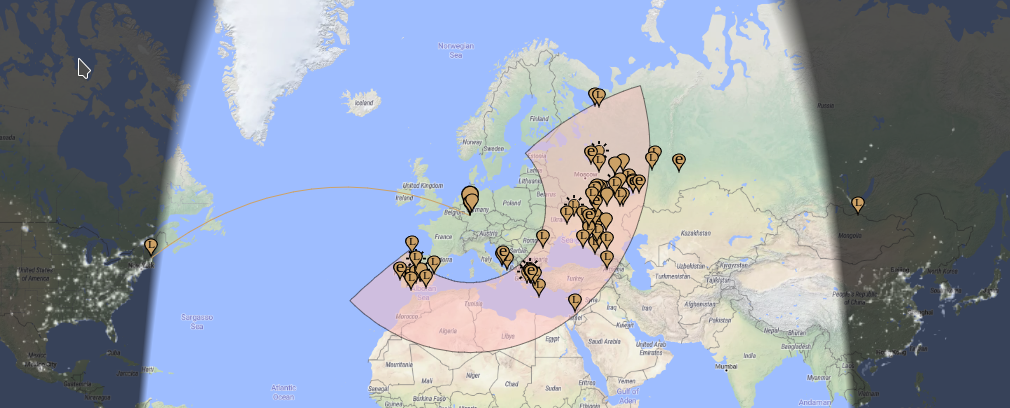
Next image shows a map related to my callsign after some 10 minutes transceiving. I was heared in USA, Russia and other locations. This was with 15 watts power.
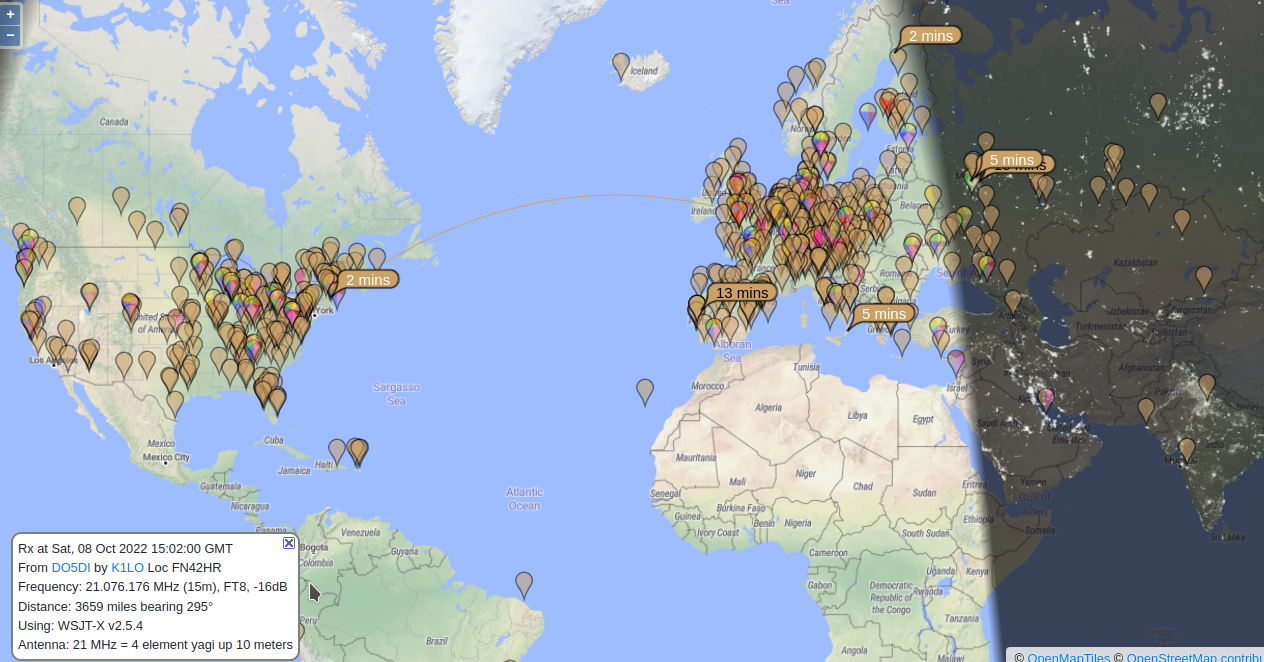
Another image some time later, now for some minutes with 30 watts.
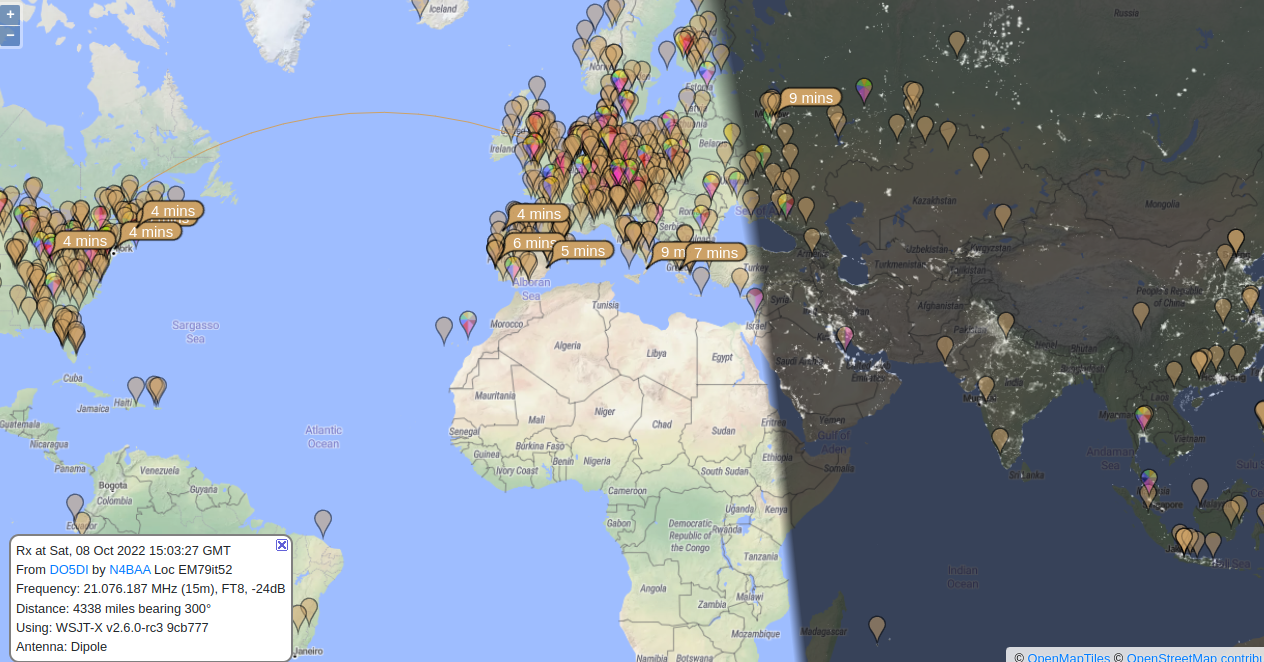
Even 2-5 watts transmissions are received in a circle of at least 3000km, in my first tries. And that all with a 1,77 meter indoor rood antenna.
GridTracker
GridTracker is an app that visualizes WSJTX data in various ways, most interesting is the map view.
![]()
Info for build and install
- Build for OpenSuse not needed, there is a Linux binary available
- Download tar ball with compiled binary from https://gridtracker.org/
- Extract. Executable is named
GridTracker
My 1st tries on the air
In the first step I only tried receiving signals. Antenna: Chinese MegaLoop MLA-30, which cannot be used for TX. But this antenna is the best I have in respect of RX. I got many signals, from all over the world. Biggest distance I randomly remember were two locations in indonesia with >11500Km distance.
I own some small rood antenna with about 170cm length, Hamking HVT-100. It is said to be tunable between 40m and 70cm. With that I also could try TXing. The antenna then stood indoor, close to window, in first floor of a building. Very poor TX conditions. With that I was copied in about 2000-3000Km maximum distance. It seems that the preferred TX direction was to the east from my location. This makes sense, because in that direction the window was located.
Links and references
PSK Reporter Map https://pskreporter.info/pskmap
Xiegu G90 CAT and digital modes https://radioddity.s3.amazonaws.com/Radioddity%20-%20Xiegu%20G90,%20CAT%20and%20Digital%20modes%20V1.0_20210623.pdf https://www.youtube.com/watch?v=x1Wi3NTMnVg
Xiegu DE90 Interface for digital modes https://www.radioddity.com/products/xiegu-de-19 https://www.youtube.com/watch?v=9IbhjQ8-ntk
User/callsign lookup https://www.qrz.com/
Country code lookup https://www.dl2fbo.de/landeskenner/
DARC Info zu WSJT https://www.darc.de/fileadmin/filemounts/distrikte/s/ortsverbaende/05/Technik/Wie_arbeitet_man_mit_WSJT.pdf
